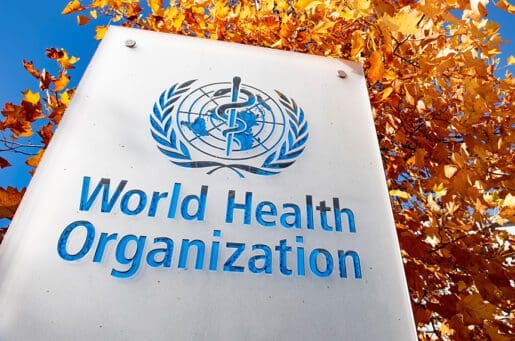Bioethics Forum Essay
The Death of Advance Care Planning is Greatly Exaggerated
Advance care planning has recently come under fire from physicians who say that it does not work and that there is too little evidence in favor of it. Advance care planning involves discussions or documents or both in which people express their values and preferences for the kinds of medical treatment that they would or would not want, particularly if they are critically ill.
Advance care planning was first developed in the United States in the 1970s and integrated into end-of-life care as a response to studies that painted a dismal picture of the state of dying. Patient preferences were often unknown, leaving families to make difficult decisions for unconscious loved ones with little guidance. Even when patients’ wishes were known, they were often disregarded. Advance care planning, as a system of practices, was designed to remedy these issues by supporting conversations between patients, families, and clinicians about patients’ end-of-life preferences in advance of medical emergencies and stating these preferences in legal documents such as advance directives.
Earlier this month, Daniela Lamas, a physician, argued in a guest essay in the New York Times that patients sometimes change their minds about what they would want if they become critically ill and that advance directives, as fixed written documents, cannot reflect these changes. Dr. Lamas recounted the story of one of her patients, who had an advance directive stating that she would not want to be hooked up to a breathing tube. But when she was rushed to the emergency room with pneumonia, her husband, told that she would die without being intubated, decided to go against her wishes and authorize doctors to intubate her. When the patient regained consciousness, she agreed with her husband’s decision. “I want advance care planning to work,” Dr. Lamas wrote. “But experiences like this one, along with a growing body of academic research, are leading me to rethink that belief.”
An editorial in JAMA last fall argued that clinical realities are simply too complex for advance care planning to be of much use. The JAMA editorial listed many shortcomings, including unclear directions in advance directives, documents that surrogate decision-makers don’t understand, and difficulties in interpreting prior conversations in which patients expressed their wishes.
Both articles also pointed to reviews of the medical literature showing little evidence of the effectiveness of advance care planning and argued that we should move away from it as a part of end-of-life care. But the evidence is in fact mixed. One study found that advance care planning helped to improve the accuracy of surrogate decision-makers in predicting patients’ wishes. Another review concluded, “Although some Quality of Care and Health Status outcomes were mixed, increased patient/surrogate satisfaction with communication and care and decreased surrogate/clinician distress were positive.”
Instead of further investments in developing and expanding access to advance care planning, critics argue for improved training to support patients and families in discussing and making medical decisions as they come up. There is good reason for this—considering specific options for care when they are needed is more relevant than people imagining what they would want in hypothetical scenarios. But there are also reasons for conducting important conversations in advance.
Decisions made in the moment are stressful and occur precisely when individuals are least able to calmly deliberate about options. The patient may be unconscious or otherwise unresponsive. Surrogates of patients who have used advance care planning make better-informed decisions about what the patients would have wanted, compared with surrogate of patients who did not use advance care planning. There is also evidence that advance care planning reduces anxiety, depression, and other emotional distress on surrogates during the grieving process. These important benefits should not be ignored. Alternatives to advance care planning should be developed, but as supplements for effective end-of-life care, not as replacements.
There are significant problems with advance care planning. Access to it varies among patient populations and is especially low among minority groups. And patients’ wishes can be ambiguous to people trying to interpret them. But instead of viewing these problems as the death-knell for advance care planning, it would be better to respond by making improvements. Possible improvements include use of video technologies to assist people with communicating their wishes and training clinicians in cultural sensitivity to reach more diverse groups of people. Many of these approaches are currently being studied. Recent changes allowing health care providers to bill Medicare and some private insurers for advance care planning may also improve access and quality.
Giving up on advance care planning is not called for by the evidence and doing so would mean giving up significant benefits. Instead, let’s improve advance care planning and enhance support for surrogates who make decisions for their loved ones at the end of life.
Ben Sarbey, JD, MA, (@SarbeyBen) is a PhD candidate in philosophy at Duke University.













Ben Sarbey’s essay is an important reminder that no one way of trying to ensure patients get the care they need or want is adequate. Dr. Lamas is rightly suspicious of using advance care planning documents as the final and definitive word, but this doesn’t mean, as Sarbey argues, that advance care preparation is worthless. Also, it is worth remembering that we don’t know the final value of the care that was provided to the patient Dr, Lamas describes. Some patients have been revived to a future they find intolerable with no safe or legal way to exit life and long for the time they had a way to die comfortably and with some dignity.
We can do both
We can do both; keep the elements that work for people and scrutinize where this is not helpful, even detrimental. Advance Directives were primarily designed by a white medical hierarchy. They did not take cultural norms into account, but assumed that everyone would be served by completing these documents. That’s were the questioning is focused, and making sure that the effort and money put into ACP produces results that benefit all patients, families and providers. I do worry that clinging to ACP as they are now done may be an expression of provider anxiety of the unknown. Having the papers, the signature on the paper may give us a false sense of order, assuage that anxiety. Why not have both – a close examination of where ACP and where they don’t.
Thank you Mr. Ben Sarbey for your insight and discussion on the utility of advanced care planning (ACP).
In my work as project manager of a longitudinal aging research study following diverse older adults in a community setting, assigning a surrogate should they lose the capacity to consent in the future has enabled study participants to explore end-of-life care decision-making. Assigning a surrogate or health care proxy has facilitated conversations between staff and our program participants about what are the benefits, risks, f/utility of medical treatment options at end of life that may have otherwise remained unknown.
In support of advanced care planning, it has in our experience helped us start candid conversations about end-of-life care options, identified persons that can serve as their surrogates or proxies, close knowledge gaps about end-of-life care, and lessened anxieties about what to expect in a time of crisis. They feel more confident about their ability to make informed health care decisions.
As you noted, advanced care planning access is limited especially among communities on the margins. From our experience, once ACP is introduced it is rarely not welcomed. Until advanced care planning is widely introduced into most communities, we really cannot estimate the value of its existence. Regardless of limited information on its utility among marginalized groups, a tool that can increase the knowledge of health care options and has the potential to decrease disparities in who has access to health care information should not be so quickly dismissed.
As a clinician, an admitting physician for a hospitalist group, it is shocking how seldom patients have had a chance to consider the options they have in medical decision making. This is particularly of concern when patients are elderly, older than 80, with multiple co-morbidities. When presented, though briefly, not only the areas for decision making but also discussing the consequences of these decisions, patients and families universally find this helpful. To hear what “success,” in cardiac/respiratory resuscitation means and what the sequelae are in regard to length of ICU stay, chance of leaving the hospital and the prognosis/quality of life over the next 12 months the response is surprise and than gratitude that someone has taken the time to provide full information.
There is no question that we can do better in training physicians and advanced practice personnel to be more comfortable having these conversations. Administration also needs to understand that quality of care and teaching of patients trumps productivity. After all, these conversations often lead to better economy.
In response to the JAMA “What’s Wrong with ACP” article, the same could be said about social change of any type including the author’s field of “geriatric and palliative care medicine.”
A key statement in the article is “New research focused on training clinicians and preparing patients and families to engage in high-quality discussions when actual (not hypothetical) medical decisions must be made is needed to achieve the outcomes that ACP has not.” That’s always been true, and the whole issue of ACP is at its beginning, not at its conclusion. ACP is a first step in a long road toward figuring out how to manage advanced illness and end-of-life care. And, of course it’s obvious that more training is needed at all levels: the general public, clinicians, institutions.
I looked at a couple of that articles references and their conclusions. These don’t necessarily support the “What’s Wrong” argument.
One states: “Outcomes for all ACP interventions were predominantly positive.”
Another concludes: “Preliminary evidence highlights several elements that influence the ACP process and provides a variety of features that could support successful, effective, and sustainable ACP implementation.”
Another reports: “This study found that an ACP video program was not effective in reducing hospital transfers, decreasing burdensome treatment use, or increasing hospice enrollment among long-stay residents with or without advanced illness.”
Not surprising. Video is not the same as conversations in-person.
One more concludes: “This trial did not confirm that our ACP program was effective in facilitating EOL care consistent with patient preferences. The program led to short-term improvements in the decision-making.” But “short term improvements” are certainly worthwhile. At end of life, it’s pretty much always short term benefits anyway.
Regarding Dr. Lamas’s article, she tells an anecdote of where a case didn’t go as planned. Many others, including me, can share anecdotes where ACP made a significant positive difference for patients, their families, and the involved clinicians. So we can have dueling anecdotes. Instead, she might consider offering ideas on how to better manage advanced illness, something almost all of us will be facing personally and professionally.
I hope nobody thinks we should stop ACP. We have to get better at it, at all levels and steps in the process. The default of NOT doing ACP is doing nothing, thus leaving critical decisions to be made by any number or persons or committees who don’t know the person whose life is at stake.